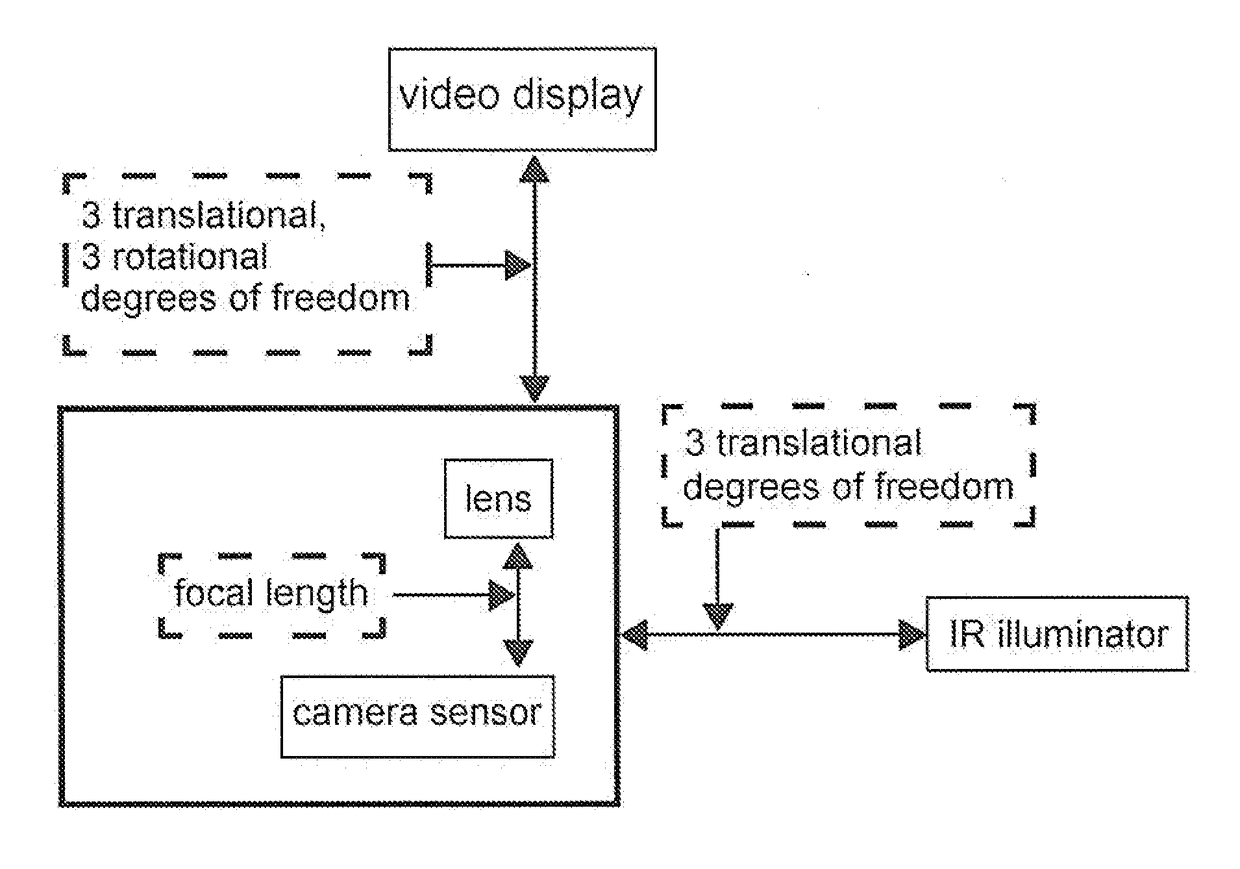Oculometric Neurological Examination (ONE) Appliance
a neurological examination and oculometric technology, applied in the field of oculometric neurological examination (one) appliances, can solve the problems of unadopted standardization of oculomotor research and testing, lack of standardized clinically relevant tools for assessing various aspects of neural processing, and unfavorable oculomotor technology standardization, etc., to achieve the effect of wide application and prevent the standardization of oculomotor technology
- Summary
- Abstract
- Description
- Claims
- Application Information
AI Technical Summary
Benefits of technology
Problems solved by technology
Method used
Image
Examples
first embodiment
[0044]In its first embodiment, the oculometric neurological examination appliance consists of one visual display, one camera consisting of a sensor and lens, and two illuminators (or light sources), and a general-purpose PC, shown diagrammatically in FIG. 3 and in perspective in FIG. 4. A rigid material (e.g., aluminum, steel, high-density plastic, carbon fiber) is used to construct a fixed frame housing a central display, the camera and illuminators. Placement of the camera and light source are optimized for a particular head-fixed tracking situation (e.g., monocular tracking of the left eye, at a viewing distance of 520 mm, with the head aligned horizontally with the center of the display, in controlled primary position).
[0045]In its first embodiment, the frame has an internal structure, comprised of sub-assemblies that serve to attach, position, or house hardware, optics, or electronic components, including: visual display panel or panels, power supply or power supplies, PC mothe...
PUM
 Login to View More
Login to View More Abstract
Description
Claims
Application Information
 Login to View More
Login to View More - R&D
- Intellectual Property
- Life Sciences
- Materials
- Tech Scout
- Unparalleled Data Quality
- Higher Quality Content
- 60% Fewer Hallucinations
Browse by: Latest US Patents, China's latest patents, Technical Efficacy Thesaurus, Application Domain, Technology Topic, Popular Technical Reports.
© 2025 PatSnap. All rights reserved.Legal|Privacy policy|Modern Slavery Act Transparency Statement|Sitemap|About US| Contact US: help@patsnap.com



